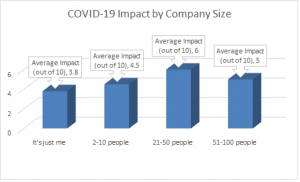
While total variable cost shows how much you’re paying to develop every unit of your product, you might also have to account for products that have different variable costs per unit. Production volume is one of the most significant factors affecting variable costs. This is because higher production volume requires more resources, such as labor and materials, to meet the demand.
What is Average Variable Cost?
For example, if it costs $60 to make one unit of your product and you’ve made 20 units, your total variable cost is $60 x 20, or $1,200. To calculate variable cost per unit, we divide the total variable cost by the number of units. One way businesses can optimize variable costs is by optimizing processes.
What are Variable Costs?
This refers to the quantity of goods manufactured or the level of service provided. It’s the measure of production or activity to which variable costs are linked. To utilize this equation, you must determine the variable cost per unit (VCU). It represents the variable manufacturing cost incurred for each unit produced or for each unit of service provided. It’s essentially the cost that varies with changes in production or activity levels.
- Manufacturing inventory software also helps track the exact costs that go into making a product, reducing the manual labour and risk of human error involved in accounting for manufacturing.
- Understanding which costs are variable and which costs are fixed are important to business decision-making.
- However, this relationship is limited by the availability of resources and the capacity of the production process.
- Otherwise, the company must adjust its business model (e.g. increase pricing) because its profit margins will inevitably compress, which is not sustainable over the long run.
How To Calculate Total Variable Costs: Examples And Formulas
Calculating variable costs is an essential aspect of running a successful business. Understanding variable costs is key to making informed decisions that impact profitability. Variable costs are expenses that change in proportion to the level of production or sales volume. These costs can include direct labor, raw materials, and other expenses that are directly tied to the production process.
Cost of production vs cost of manufacturing
Examples include raw materials, direct labor, transportation, delivery, commissions, packaging, and supplies. These are highly dependent on the volume of production of goods and services. Efficient management of variable costs is a cornerstone of successful business operations. Focusing solely on variable costs might lead businesses to overlook longer-term strategic considerations. By constantly evaluating and adjusting resource allocation based on variable cost data, businesses can ensure they’re operating efficiently and maximizing returns. Implementing knowledge of variable costs can lead to improved decision-making and better business strategies.

What steps are involved in computing total variable costs from production data?

This measures the costs that are directly tied to production of goods, such as the costs of raw materials and labor. While COGS can also include fixed costs, such as overhead, it is generally considered a variable cost. The variable costing approach helps businesses understand how their variable costs and price per item formula contribution margin contribute to covering their fixed costs and profitability. Effective budgeting for variable costs is crucial for any business looking to maximize profits. Variable costs are expenses that fluctuate with changes in production or sales volume, and they can be difficult to predict.

Your average variable cost uses your total variable cost to determine how much, on average, it costs to produce one unit of your product. Semi-variable costs are costs that have both fixed and variable components. The fixed component of semi-variable costs is the portion that remains constant regardless of the level of production. The variable component of semi-variable costs is the portion that varies with the level of production. Another way businesses can optimize variable costs is by reducing waste. By analyzing their production processes and identifying areas where waste is occurring, businesses can reduce their variable costs and increase their profits.
Can you provide a clear example of a variable cost in a manufacturing context?
Salaries are fixed costs because they don’t vary based on production or revenue. However, if you pay commissions for every unit sold on top of a salary, they would be variable costs. Variable cost per unit refers to the total cost of producing a single unit of your business’ product.
Amy asks for your opinion on whether she should close down the business or not. Additionally, she’s already committed to paying for one year of rent, electricity, and employee salaries. Variable costs are the expenses that change in direct proportion to the volume of goods or services a company produces.
These costs remain relatively stable over time, regardless of whether the business is producing many units or none at all. This table illustrates how the variable cost will always increase the total cost as the production amount increases, irrespective of the fixed cost. It’s significant to understand how much money will be spent based on demand and production ability.
